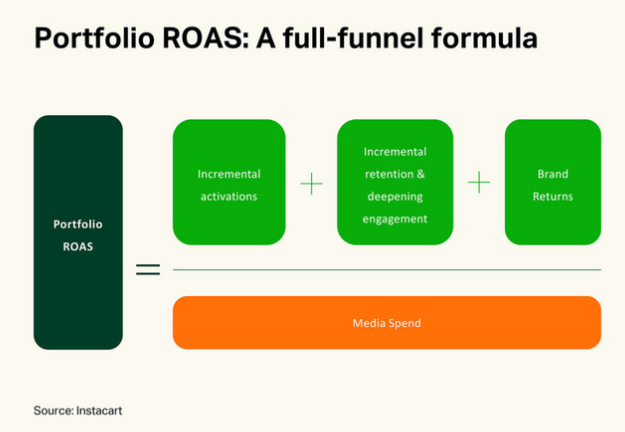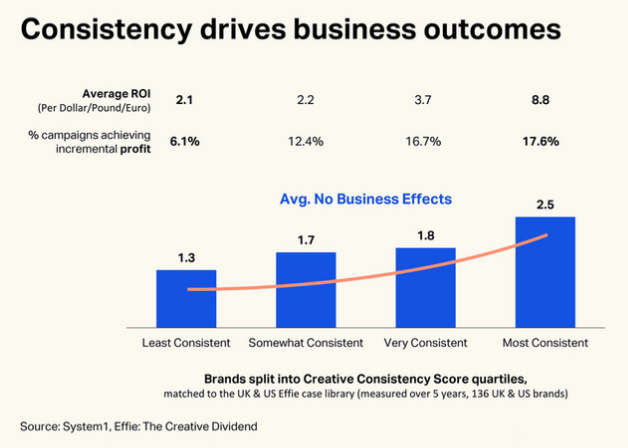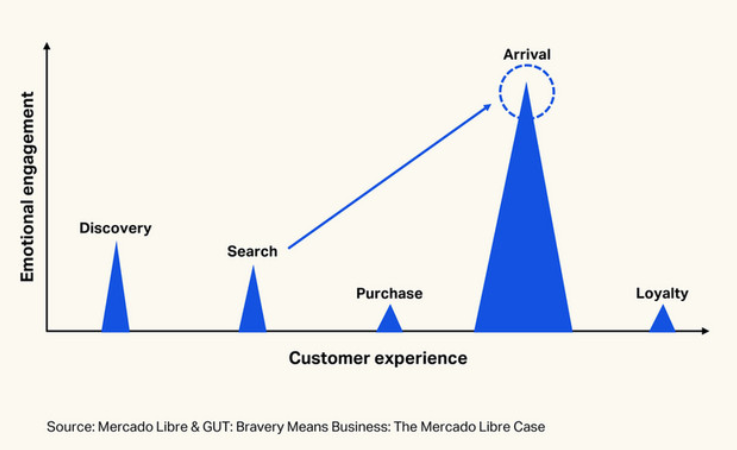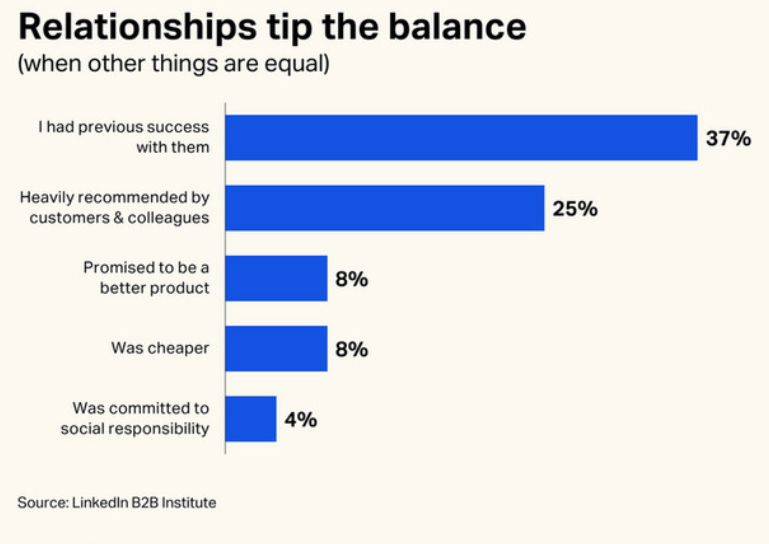The report by Warc titled Creative Impact Unpacked, which summarises the ideas presented during the discussion forum, reveals that creativity works best when it is consistent, distinctive, and resonates with the audience’s emotions. The report focuses on several key points, such as bridging the gap between marketing language and C-suite thinking, the importance of long-term consistency, the challenge of a fragmented media environment, the role of creators, the need to improve customer experience, the multiplier effect, regional differences, and the critical importance of creativity.
How to convince the C-suite
One of the main topics at the Creative Impact discussion forum was the effort to bring the language of marketing closer to the C-suite. While the creative industry often talks about courage in designing campaigns, executives tend to perceive the risk associated with such courage. Karen Crum from EY Parthenon pointed out that one of the best tools for mitigating crises is a strong brand, as it helps companies recover more quickly from shocks such as cyberattacks.
Attention was also drawn to a recent study titled Cost of Dull, conducted by Adam Morgan from eatbigfish and Dr. Karen Nelson-Field from Amplified Intelligence. The findings indicate that the average cost of weak creativity in unengaging media is estimated at 43 cents for every dollar invested, which amounts to nearly two hundred billion dollars in losses across the industry.
Marketing director Laura Jones from Instacart joined the discussion by demonstrating how to shift management’s thinking from an obsession with return on ad spend (ROAS) at the individual marketing channel level to a portfolio ROAS approach, which brought Instacart great results during their Super Bowl debut, including a dramatic increase in new customers and revenue.
 Source: Warc.com
Source: Warc.comConsistency as a weapon against chaos in marketing
Another key point was the issue of consistency. Mark Ritson, founder of MiniMBA, stated that based on data from System1 and Effie, consistency is a crucial component of effective marketing (alongside emotion and brand identity/distinctiveness).
The winners in Cannes are clear proof that emotional consistency is just as important as visual identity and helps brands stand out in an information-saturated world. Every execution should evoke the same feeling, as fragmented emotions confuse consumers and weaken memorability. A good example is Yorkshire Tea, which runs its campaigns for an average of two years and increases distinctiveness by fifteen per cent annually. Apple, with its “Shot on iPhone” campaign, proves that it’s possible to maintain both originality and commercial impact even after ten years. The Marmite spread has relied on the simple idea “You either love it or hate it” for thirty years, continuously reinvented in new forms, while Felix pet food earns Nestlé a billion dollars a year thanks to its long-term combination of identity and consistency.
If there was one word that brought together the Creative Impact programme at Cannes Lions this year, it would be ‘Consistency’.
David Tiltman, Chief Content Officer, Warc and SVP Content, Lions Intelligence
According to research by System1, consistent brands are twice as likely to see profit growth and achieve four times higher return on investment compared to those that frequently change their strategy.
 Source: Warc.com
Source: Warc.comHowever, the topic of consistency proved to be challenging in today’s environment, where brands produce significantly more content than before and where algorithms fragment the media landscape. This challenge was the focus of a discussion featuring Dr. Grace Kite and Tom Roach. According to Grace Kite, fragmentation can be an opportunity for brands, and the secret to success lies in the synergistic effect. Tom Roach argued that the solution is not rigid uniformity, and that brands should not rely on individual campaigns but rather on a cohesive system of ideas built around strong, easily recognisable, distinctive brand assets — or “brand codes.”
A good example is McDonald’s, which has moved away from a traditional unified set of visual elements and built a brand universe that can evolve in all directions without hitting any boundaries. Desperados, on the other hand, collaborates with creators, giving them freedom within a predefined framework, while Duolingo balances proven content with experimental content (70:30), with the unifying element being its owl mascot.
The validity of this approach was confirmed by strategy experts Paula Bloodworth and Rob Campbell. They compared the process-driven approach of many marketing teams to the way artists like Idris Elba and Metallica work — quickly and based on a clearly defined point of view.
Creators as an integral part of communication strategies
Another important topic was the rise of creators as a cultural force. Brands today face a new reality: influencers can no longer be seen as an add-on but as an integral part of communication strategies. Unilever increased its investment in influencers by 120%, and the number of creators involved grew by 800%. Poppi and L’Oréal also achieved remarkable success through collaboration with creators.
However, the results are not always positive: an analysis by CreativeX showed that nearly half of investments in creators on platforms like Meta are wasted because the content does not follow basic rules. Only fourteen per cent of videos are watched by users for more than three seconds, and more than half fail to show the brand within the first three seconds, which can increase completion rates by a third.
Improving customer experience
During the discussion forum, the term “unshittification” was mentioned, referring to the fight against the deterioration of a service or product due to erosion in its quality. Many brands are therefore demonstrating how to reconnect marketing with customer experience. For example, Gap addressed “confusion” by merging teams into a unified service group, thereby ensuring brand consistency across all touchpoints. Sephora, on the other hand, focuses on emotions — product samples are a key element that evokes joy and ensures personal recommendations, not just a complement to an efficient purchase. Mercado Libre found that the strongest emotional moment is the package arrival. The result is a new slogan: “Lo mejor está llegando,” which can be translated as “The best is coming.”
 Source: Warc.com
Source: Warc.comMultiplier of effectiveness
Another interesting topic that emerged in Cannes is the need to integrate brand and performance into a single strategy, as this connection acts as a multiplier of effectiveness. The idea of the “multiplier effect” shows that real results only begin to emerge when both worlds are combined.
According to research conducted by WPP Media in collaboration with Oxford University, consumer decision-making is largely shaped long before a potential customer enters the purchasing process. When people reach the moment of choice, they usually go for the brand they had in mind beforehand. Therefore, it is necessary to connect long-term brand building with performance activities.
One of the major obstacles preventing the multiplier effect is the company culture. It often happens that brand and performance teams operate separately, with different goals, different metrics, and sometimes even opposing assumptions. The result is that they block each other. This used to be a problem for Instacart, which came up with an inspiring solution: it unified both budgets and goals, thereby eliminating the previous competition between the marketing team responsible for the brand and the team responsible for performance marketing.
Another interesting finding was that creativity can be successfully brought into areas that might initially seem too “sales-driven” or “down-to-earth,” such as discount or promotional campaigns. This was achieved, for example, by Mercado Libre, which proved that even Black Friday can be a fun and brand-strong experience. Similarly, Instacart caught attention with the spot “Summer like it’s 1999,” which combined a nostalgic story from the ’90s with a specific discount offer. The conclusion? Even within purely sales-focused activities, a brand can remain distinctive, memorable, and strengthen its value over the long term.
Same same but different
This year in Cannes, there was much discussion about whether the rules of effective marketing apply globally or whether brands need to find their own paths in different parts of the world. The experiences and data presented at the festival show that the basic principles remain the same, but the way they are executed must be adapted to specific markets and cultures. This gave rise to the slogan “Same same but different.” The winning campaigns from Cannes Lions 2025 prove that even though the recipe for success is essentially the same, the ingredients must be tailored to the tastes of the local audience.
In rapidly changing environments, speed also plays an important role. That’s why the “twin pace” approach is gaining traction — a combination of short-term sprints focused on immediate performance and a long-term marathon that strengthens the brand for the future. A strong example is the global brand Zespri, the world leader in kiwi sales. Thanks to the consistent application of the twin pace strategy, it was able to double its sales in Asia between 2015 and 2024.
Another key concept that came up in the discussion was “instant brand power” — the ability of a brand to respond immediately without sacrificing its identity. Yang Zhang, Chief Marketing Officer of the global dairy brand Yili, emphasised that today the consumer is the true “director of ideas.” Brands, therefore, need to be ready to respond flexibly while maintaining consistency. A typical example is once again Mercado Libre, which swiftly changed its logo from a handshake to an elbow bump during the pandemic. The decision was made within four hours — demonstrating the brand’s ability to stay relevant without losing its long-term identity.

B2B marketing
The Cannes Lions Festival 2025 confirmed that B2B marketing is no longer a niche discipline. For the first time, the festival featured its own forum dedicated solely to B2B brands and their challenges. The main message was that a brand in the B2B world is not just about awareness, but primarily about “buyability” — the ability to make the purchasing decision easier.
Three-quarters of today’s B2B buyers are Millennials and Generation Z, who expect video content, entertainment, and influencer engagement. For them, a brand is more than just product features — it’s a signal of trust and social acceptance. According to LinkedIn’s B2B Institute, a B2B brand has the greatest chance of being chosen if it is known from the very beginning of the decision-making process.
 Source: Warc.com
Source: Warc.comLong-term brand building is therefore essential in the B2B environment as well. Dr. Marcus Collins reminded us that purchasing decisions are not purely rational—they are influenced by emotions, social relationships, and culture. Moreover, B2B transactions are rarely decided by an individual; usually, it’s a group where recommendations and references carry the most weight, giving the group confidence that the purchase is the right move. B2B brands must move away from purely rational language and learn to tell stories that evoke both emotion and trust.
Lessons from Creative Effectiveness
This year’s Cannes Lions festival clearly showed that the most effective campaigns are built on consistency, emotions, and the connection between brand and performance marketing. It was confirmed that the driving force behind growth — both for global giants and startups — is creativity, provided it is supported by data and applied across the entire marketing mix.
Artificial intelligence was a frequent topic at the festival, but it did not bring any breakthrough in this category. An exception was Mercado Libre’s “Handshake Hunt” campaign, which used AI for real-time discounts. On the other hand, it was confirmed that entertainment is a reliable path to great impact. A good example is Sheba, whose Gravy Race generated sales worth $21.9 million. Specsavers attracted attention with a version of Rick Astley’s hit and recorded an increase in interest in hearing tests of more than one thousand per cent. Xbox combined the world of the Football Manager game with reality by offering the winner of the in-game league a real job at the football club Broomley FC, achieving a 62% increase in sales. The product itself can also play a role: Vaseline launched the Pro Derma line for trans women during their transition process. By doing so, it created a new market segment and showed that creativity can also lie in product innovation.
Andrea Diquez, Jury Chair, emphasised that the goal was to provide proof that creativity works and to encourage brands to make bold choices. In summary, AI is still finding its way, but entertainment, product bravery, and cultural relevance deliver real effectiveness.
Source: warc.com

